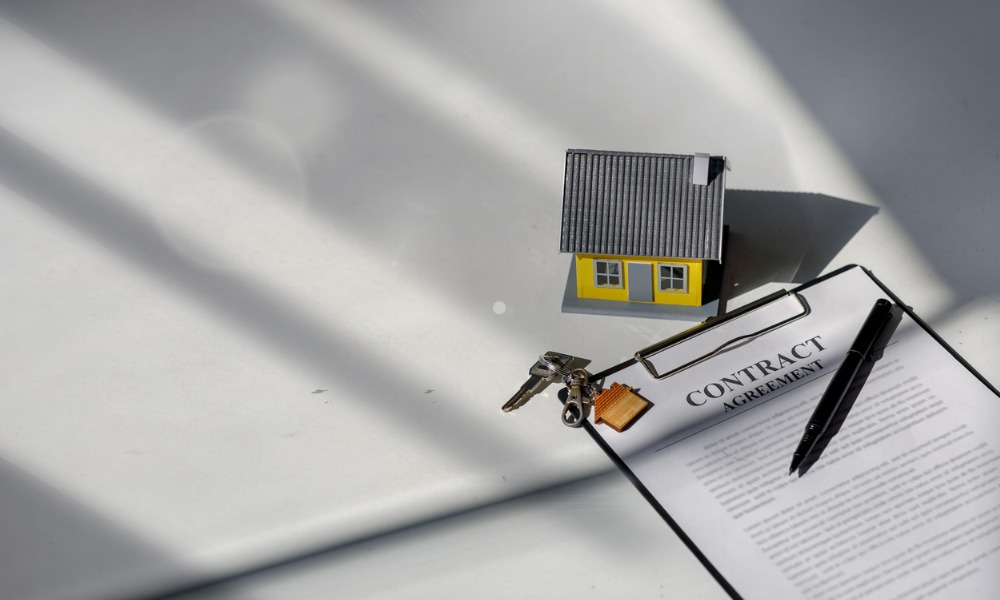Experts coincide on data, although home prices still robust amid reduced profit margins for brokers and lenders

The US housing market is heading for a recession, various sources have confirmed.
The latest figures from the Mortgage Bankers Association (MBA) show that mortgage applications fell 18% year on year - the lowest level in 22 years – while refinance volume plunged 82% compared to 2021.
Meanwhile, the National Association of Realtors (NAR) this week reported that existing home sales fell by 5.9% in July and by more than 20% compared to last year. Except for the dip experienced at the start of the COVID pandemic, this was the slowest sales pace in more than six years.
The NAR added that the inventory of unsold existing homes rose to 1.31 million last month - the equivalent of 3.3 months at the current monthly sales pace.
The data prompted NAR’s chief economist Lawrence Yun to remark: “We’re witnessing a housing recession in terms of declining home sales and home building.”
Only home prices have continued to rise nationally, he added, with nearly 40% of homes still commanding the full list price.
Read more: Eight straight months of declines erodes homebuilder confidence
But according to home price data from John Burns Real Estate Consulting, 83% of home builders have reduced their prices in the last three months. It added that most of the 17% that had not reduced them were located in the Eastern US.
The drop in homebuilder sentiment is another issue affecting the housing market. Data from the National Association of Home Builders (NAHB) shows the buyer traffic number has fallen to the lowest level since 2014. This follows eight consecutive months of declines for single family homebuilder confidence.
Robert Dietz, NAHB’s chief economist, said he expected single-family housing starts this year to post their first decline in more than a decade, a consequence of higher mortgage rates, and ongoing higher construction costs.
He also agreed that the housing market was in recession.
Homebuilder stocks are also down, with builders Lennar, Toll Brothers, KB Home and D.R. Horton (the largest builder in the US by volume) all reporting negative numbers.
Odeta Kushi, First American’s deputy chief economist, said home sales were “likely to further fall”, while her colleague, chief economist Mark Fleming, said prices were still going strong, but “less so than three months ago”.
Robert Shiller, economics professor at Yale University, added his weight to the debate by saying this week that the housing market “is headed for trouble”.
He said that “things look almost as bad as the 2007/09 recession” but was quick to add that it “would not be as catastrophic”.
Read more: Mortgage applications hit 22-year low, lending activity suffers
Significantly, although home prices have maintained their overall upward pace, Shiller noted that prices might also be heading for a decline and that negative equity was a possibility. “That’s when people have an incentive to default,” he told CNBC.
The latest figures from real estate data curator, ATTOM, also show that foreclosure activity is on the rise.
A total of 270,470 residential properties were in the process of foreclosure in Q3, up 4.4% from the second quarter of 2022, and up 25.5% from the third quarter of 2021.
From the point of view of brokers and lenders, they are also facing additional costs and reduced profit margins.
According to the latest data from the MBA, independent mortgage banks (IMBs) and mortgage subsidiaries of chartered banks reported a net loss of $82 on each loan they originated in Q2, down from a reported gain of $223 per loan during the previous quarter this year.
It found that average production volume was down $103 million in the second quarter compared to Q1, and that total production revenue (fee income, net secondary marketing income and warehouse spread) dropped by 335bps in the second quarter.
On a per-loan basis, production revenues decreased slightly to $10,855 per loan during the same period, down from $10,861 per loan in the first quarter.
Marina Walsh, MBA’s VP of industry analysis, said the average pre-tax net production income per loan had reached its lowest level since the fourth quarter of 2018.
“Combining both production and servicing operations, only 57% of the companies in our report were profitable. Pulling out a profit in these difficult conditions is no easy feat,” she said.
Mortgage Professional America reached out to brokers to gauge the mood in the sector.
Dean Rathbun, senior vice president at California-based United American Mortgage, said: “We have definitely seen a slowdown, not only in actual closings but in general inquires and activity. While that has been the case from the beginning of July to last week, we have seen an uptick in calls this week which is good news. I am not sure if that is due to rates lowering a bit, or people coming back from vacations and focusing on housing.”
He said the market had been “eerily quiet in July”, adding that while employees were still busy, the company “can certainly handle much more”.
Whitney Bulbrook, president of Carolina Ventures Mortgage, based in Chapel Hill, North Carolina, about 30 miles from Raleigh, which is considered one of the country’s top locations for homebuyers, according to recent surveys, said she had noticed a slowdown in mid-June, coinciding with rates reaching almost 6%.
“With the significant uptick in rates, we are in a purchase market predominantly. Compared to 2020 and 2021, we are closing fewer refinance transactions.”
However, she added: “Now with rates in the fours, we’re seeing an uptick in mortgage applications. I reviewed my August 2021 purchase closings for comparison and it’s identical to this August in terms of units.
“North Carolina continues to see a tremendous amount of growth. I am not seeing a slowdown in home prices or homebuyer interest. We are still in multiple offer situations for most clients.”



